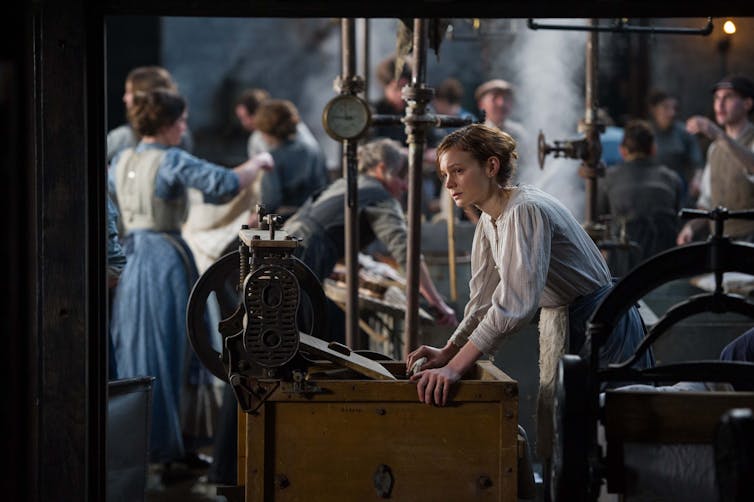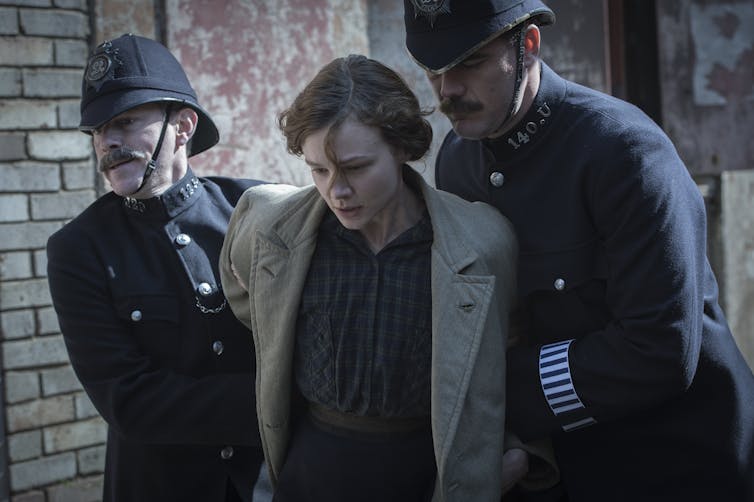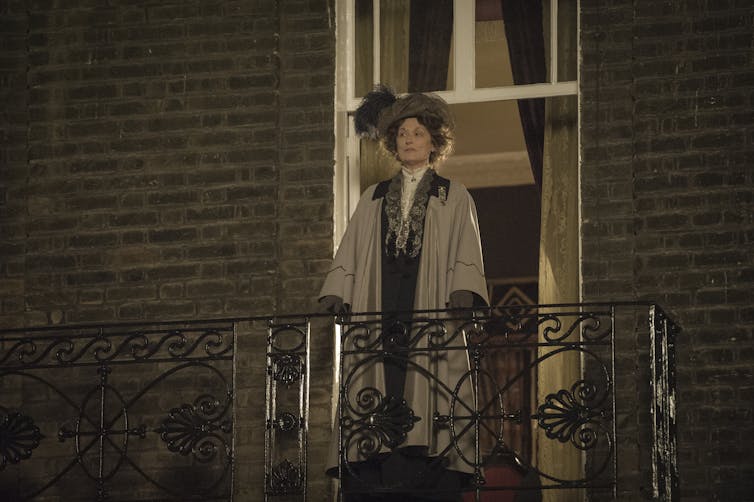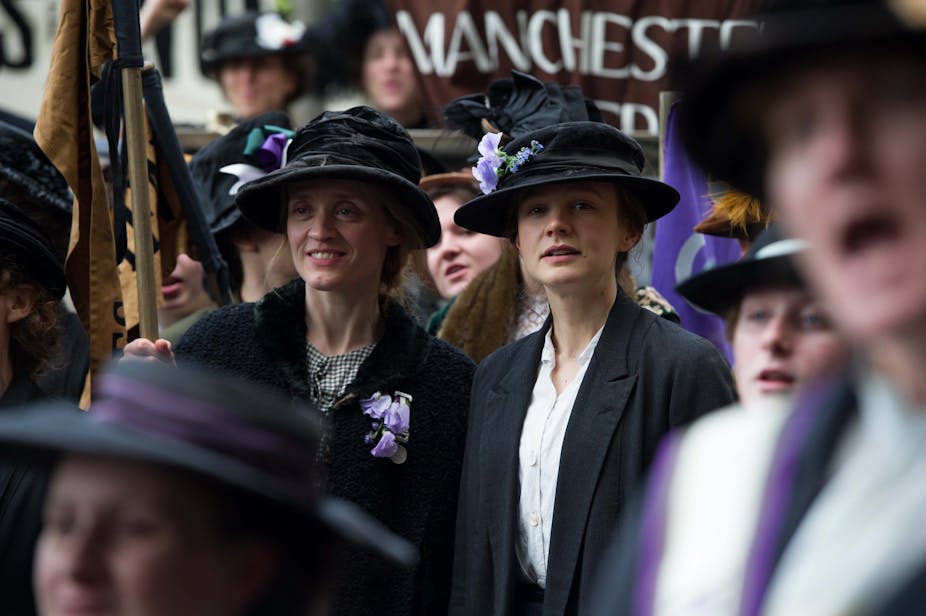At school I was taught the women’s suffrage movement on several occasions – but never found these history lessons particularly inspiring. Suffragettes, we were told, were nice (if slightly bonkers) posh ladies in impressive hats, to whom we had to feel extremely grateful.
As a result, when I began my own research into the history of British feminism, I tended to avoid the suffragettes in favour of less well-known and less well-dressed women engaged in struggles that extended beyond the parliamentary vote – for freedom of sexual expression, for access to birth control, and for their rights as workers.
But in the last few years, I have once again encountered the women’s suffrage movement – this time in the archive rather than the school room – causing me to reassess this audacious, politically rich and socially diverse movement, intent on direct conflict with the state.
Posh ladies in hats
So I was glad to see that the film Suffragette does an excellent job of debunking some of the myths that continue to pervade official histories of “votes for women”. The Women’s Social and Political Union (WSPU) did indeed recruit many wealthy women, and was led by the middle-class and highly educated Pankhurst family.
But (as feminist historians have been arguing for decades) support for women’s enfranchisement was also popular among working-class women – many of whom joined the fight, despite the difficulties of combining this with jobs in factories and their responsibilities as housewives.

In focusing on the lives of East End laundry workers Maud Watts (Carey Mulligan) and Violet Miller (Anne-Marie Duff), the film gives fictional voice to the experiences of real-life suffragettes. Their stories speak to that of Hannah Mitchell who worked as a domestic servant and a seamstress, and even after marrying had to take on sewing work to supplement her husband’s meagre wages. On top of all this, she travelled regularly from the north of England to London to protest outside parliament, and organised local activities for the WSPU and Women’s Freedom League. Such dedication eventually resulted in a breakdown from overwork. Hannah Mitchell never regretted or gave up her political activism, but she did remark in her autobiography how working-class suffragettes such as herself had to campaign “with one hand tied behind us”.
Of course, Suffragette also brings alive some of the more familiar and possibly hackneyed images we associate with the suffrage movement. Maud and Violet join a demonstration outside parliament, which is soon violently broken up by the police. In a period when a great deal of ink was spilt writing paeons to the delicacy, tenderness and sensitivity of womankind, and when opponents of female enfranchisement often premised their arguments on the assumption that women were weaker than men and needed their protection, it was deeply shocking to see members of the fairer sex viciously and publicly beaten up by an all-male police force.

Suffragette organisations at the time were aware of the publicity value of revealing such gross hypocrisy. Director Sarah Gavon likewise plays very effectively on the shock the audience is made to feel in the face of such visual dissonance. In this scene, an older woman is relentlessly beaten to the ground by a gang of policemen with truncheons, while Violet has her shirt torn off – hinting at the sexual assault and humiliation that was a stock part of police violence against suffragettes.
Shortcomings
Historians are always terribly boring people to watch historical dramas with. Although Suffragette is in the main extremely well researched and historically accurate, I couldn’t help but be struck by two important absences.
Firstly, the National Union of Women’s Suffrage Societies (the “suffragists”) is never mentioned. This umbrella organisation, which rejected the use of law-breaking and violent tactics, was just as important as the Pankhursts’ WSPU in this period. There is nothing wrong with deciding to focus on the WSPU, but in the opening credits of the film we are told that 50 years of peaceful campaigning for the vote had failed to achieve reform.

This was indeed the argument put forward by the Pankhursts when they decided that suffrage activists needed to start smashing windows, firebombing letterboxes and blowing up stately homes. But the film misleadingly implies that by 1912 everybody felt this way. To the contrary, the non-militant societies continued to recruit throughout the 1910s – many of them focusing their energies instead on building alliances with the newly-formed Labour Party.
The Labour Party, and those in the trade union movement who combined support for class struggle with women’s emancipation, is also entirely absent from the film. This is all the stranger, given that Suffragette is set in the working-class neighbourhoods of East London where the socialist feminist Sylvia Pankhurst and the radical Labour MP George Lansbury had a strong base of support. It’s a shame that this fascinating history is not drawn upon to inform the experiences of Maud, whose commitment to the suffrage cause results in her expulsion from the family home and rejection by her community.
It’s certainly not inaccurate to portray Maud’s husband Sonny (Ben Whishaw) as a kindly yet flawed patriarch, profoundly threatened by his wife’s awakening political consciousness. But it is also just as likely that Sonny was someone like Hannah Mitchell’s husband, who believed that a better world for working men like himself, could only occur hand-in-hand with the liberation of women – even if he did still expect her to have his tea ready on time.

